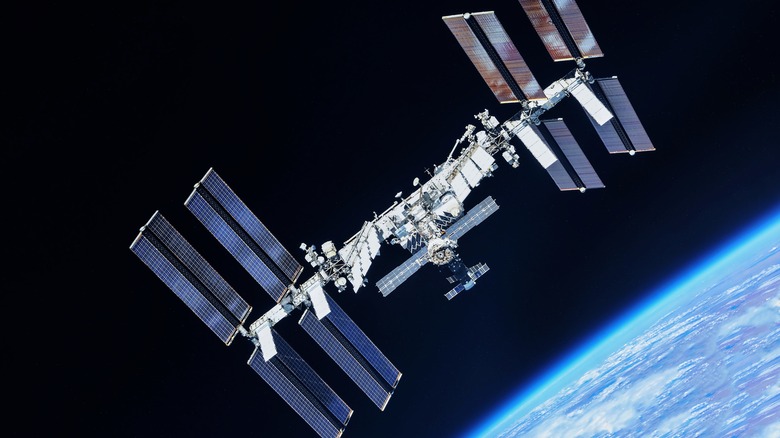NASA Says Goodbye To The ISS - Say Hello To Privately Owned Space Stations
If you look up at just the right time, you may be able to see the International Space Station (ISS) shooting across the sky at 17,000 miles per hour. It's quite a sight, and the ISS celebrated 25 years of sustained human presence there on November 2, 2025. However, NASA is making plans for its retirement as space travel and exploration increasingly moves into the private sector.
The ISS recently made headlines when two astronauts spent nine months there on what was planned to have been a week-long mission. Its history dates back to the mid-1980s, when President Ronald Reagan approved the project. Afterward, the ISS was designed and constructed in an international partnership between the U.S., Canada, Japan, Europe, and Russia. According to NASA, the station was assembled in space like a "Lego set" and is the biggest human-made object to ever orbit our planet. In 2000, just days before Florida started recounting votes to determine if Al Gore or George W. Bush would win the election, NASA's Expedition 1 brought the first permanent crew members to the ISS, which was still under construction.
There are typically seven astronauts onboard conducting hundreds of experiments at a time. This orbiting lab presents a unique opportunity for science, allowing researchers to conduct long-term experiments in space. However, its time is coming to an end, and NASA plans to deorbit the space station by the end of 2030.
The future of low-Earth orbit exploration
Just how will NASA go about deorbiting a 356-foot long space station that is the size of a large home? NASA explored several options, including disassembling the station for return to Earth. However, the agency ultimately decided that a controlled re-entry with a crash landing into a remote section of ocean was the best course of action. To ensure that the ISS lands where it's supposed to, NASA selected SpaceX to develop a deorbit vehicle that will line up the reentry path. Much of the station is expected to burn up upon reentry into the atmosphere, and the environmental impact of anything that makes it to Earth is expected to be minimal.
Once the ISS is decommissioned, NASA plans to shift its priorities to study things beyond the low-Earth orbit, like the Moon and Mars. While there is great interest in exploring the habitability of our neighboring planet, there's no denying the impact that the more than 4,000 experiments conducted on the ISS had. While on board, scientists studied everything from DNA sequences to cancer therapies to thunderstorms, with all of this work helping us better understand life on our planet.
The baton for low-Earth orbit exploration is now largely being handed over to the private sector, though NASA isn't completely stepping away. In 2021, the agency signed agreements with Blue Origin, the Northrop Grumman Systems Corporation, and Nanoracks LLC for the development of new space station designs, along with other "commercial destinations." The hope is to get these projects off the ground, literally, before the ISS is shut down so that there's no gap in services.

